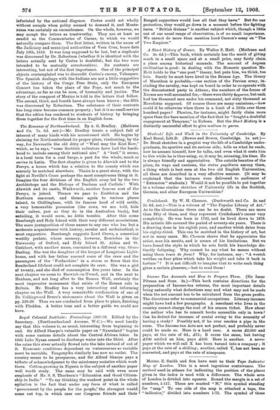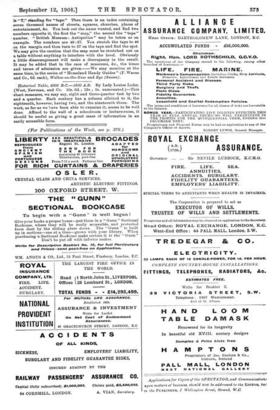Messrs. E. Smith and Son have sent us their Tape
Indicator Map of London. This is a most ingenious contrivance. The method used in atlases for indicating the position of the places given in the index is used with a difference. The whole area of London is divided into squares. Round the margin is a set of numbers, 1-117. These are marked "M," this symbol standing for "map." To one side of the map is attached a tape, the "indicator," divided into numbers 1-75. The symbol of these is "T," standing for "tape." Then there is an index containing seven thousand names of streets, squares, churches, places of entertainment, &c. You look out the name wanted, and find two numbers opposite it, the first the "map," the second the "tape" • number. "British Museum : Antiquities" may be taken as an example. The numbers are 48 :37. You stretch the tape to 48 on the margin and then turn to 37 on the tape and find the spot We may give the caution that the map must be stretched out on a table without anything to interfere with the level. Obviously a little disarrangement will make a discrepancy in the result.
• It may be added that in the case of museums, &c., the times and terms of admission are given.—We may mention at the same time, in the series of "Homeland Handy Guides" (F. Warne and Co., 6d. each), Walton-on-the-Nate and Bye (Sussex).











































 Previous page
Previous page